Tourists were taken by surprise on Tuesday morning when a boiling hot geyser exploded with black debris in Yellowstone National Park. Debris, wood from the boardwalk and boiling hot water were sent shooting into the sky during the violent episode.
After things calmed down in the park and the area was cordoned off, scientists were able to survey the scene and find the cause of the sudden event.
What Happened?
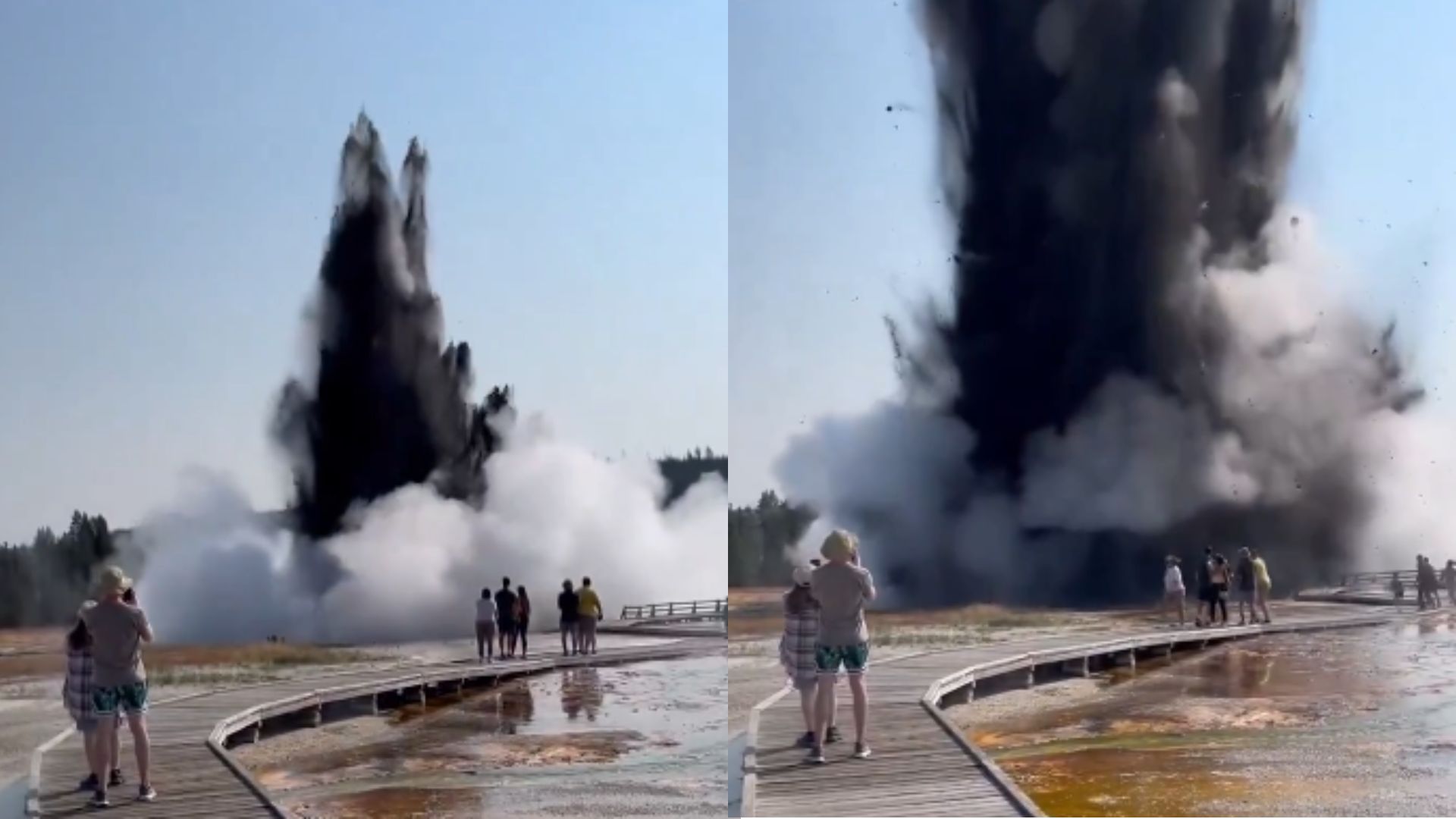
At roughly 10 a.m on Tuesday morning local time the geyser known as Old Faithful exploded at the Black Diamond Pool located inside the Biscuit Basin.
The boardwalk was immediately damaged by the explosion and videos of the event showed visitors of all ages running to safety. Thankfully, no one was seriously injured during the event.
The Explosion
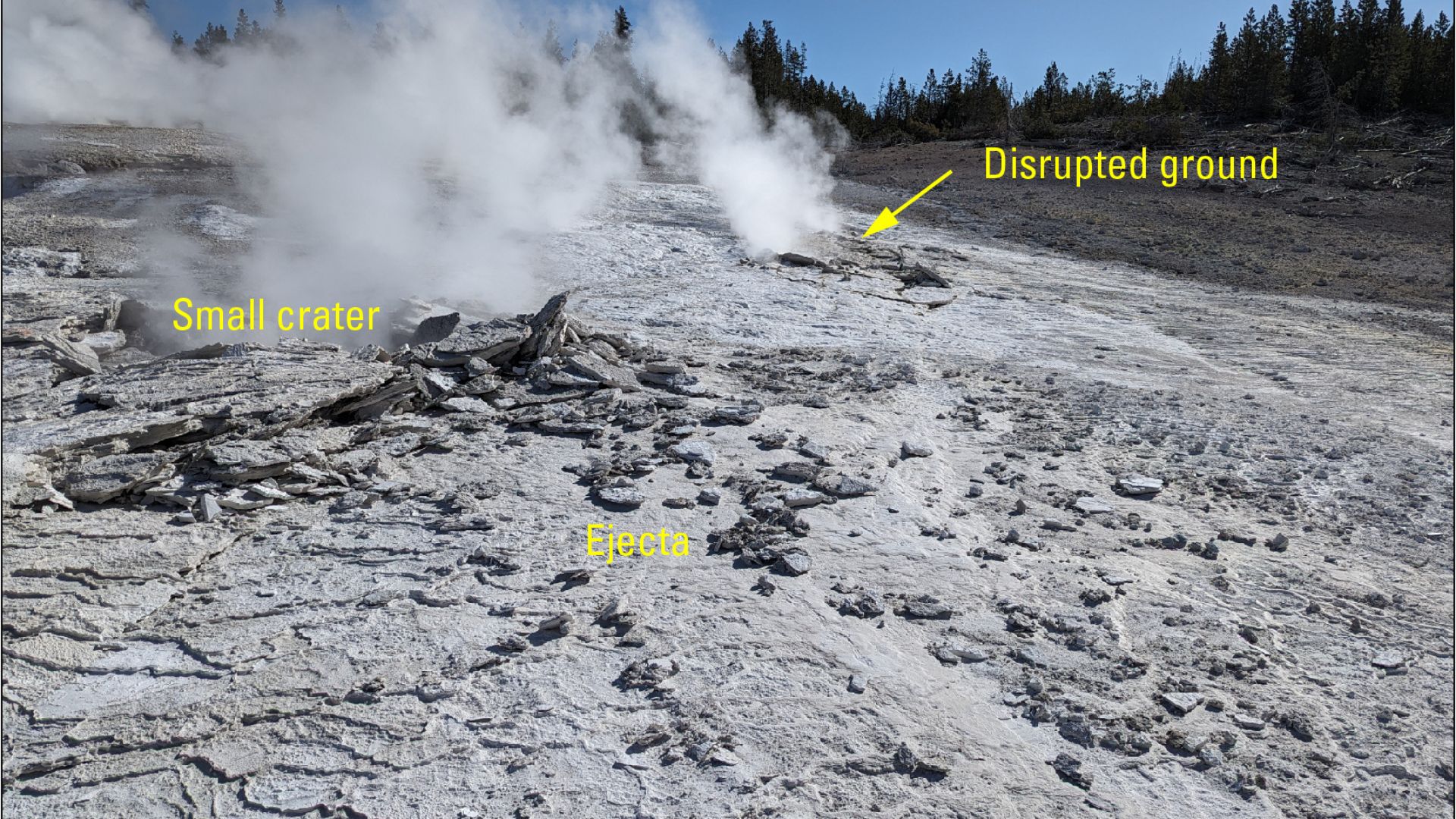
Mike Poland, a scientist at the Yellowstone Volcano Observatory, wrote in a joint statement with the Yellowstone National Park and U.S. Geological Survey that “The explosion appears to have originated near Black Diamond Pool.”
He also noted that the hydrothermal explosion occurred about 2.1 miles northwest of Old Faithful.
The Cause
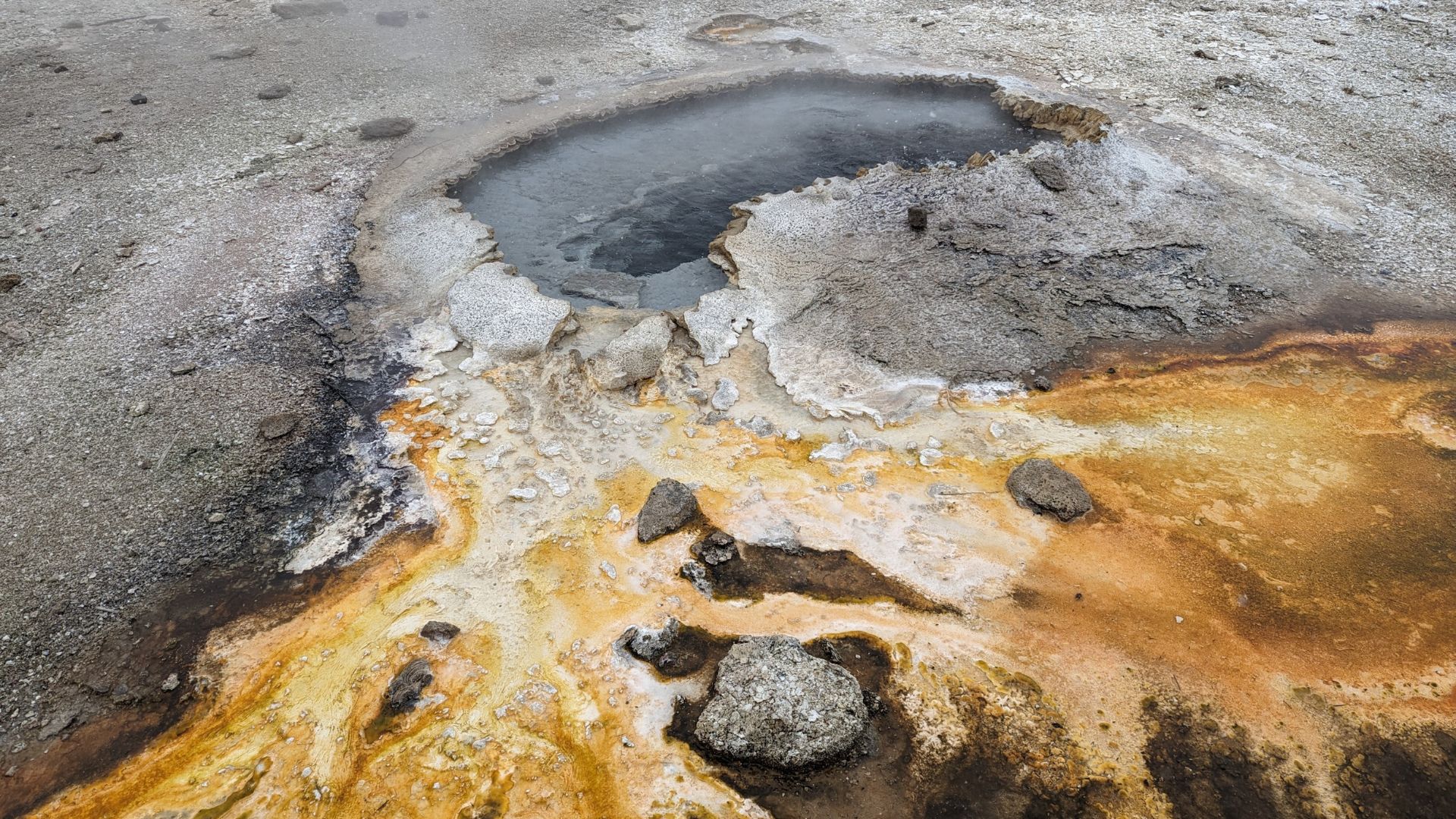
Scientists were able to determine that the cause of the event was a hydrothermal explosion that expels boiling water, steam and mud. This event occurs when super hot water that gets stuck under reservoirs comes unto contact with hot rock or magma.
The intense heat turns water into steam quickly and increases pressure until is exceeds the strength of the rock on top and creates a massive explosion to release the pressure.
Hydrothermal Explosions
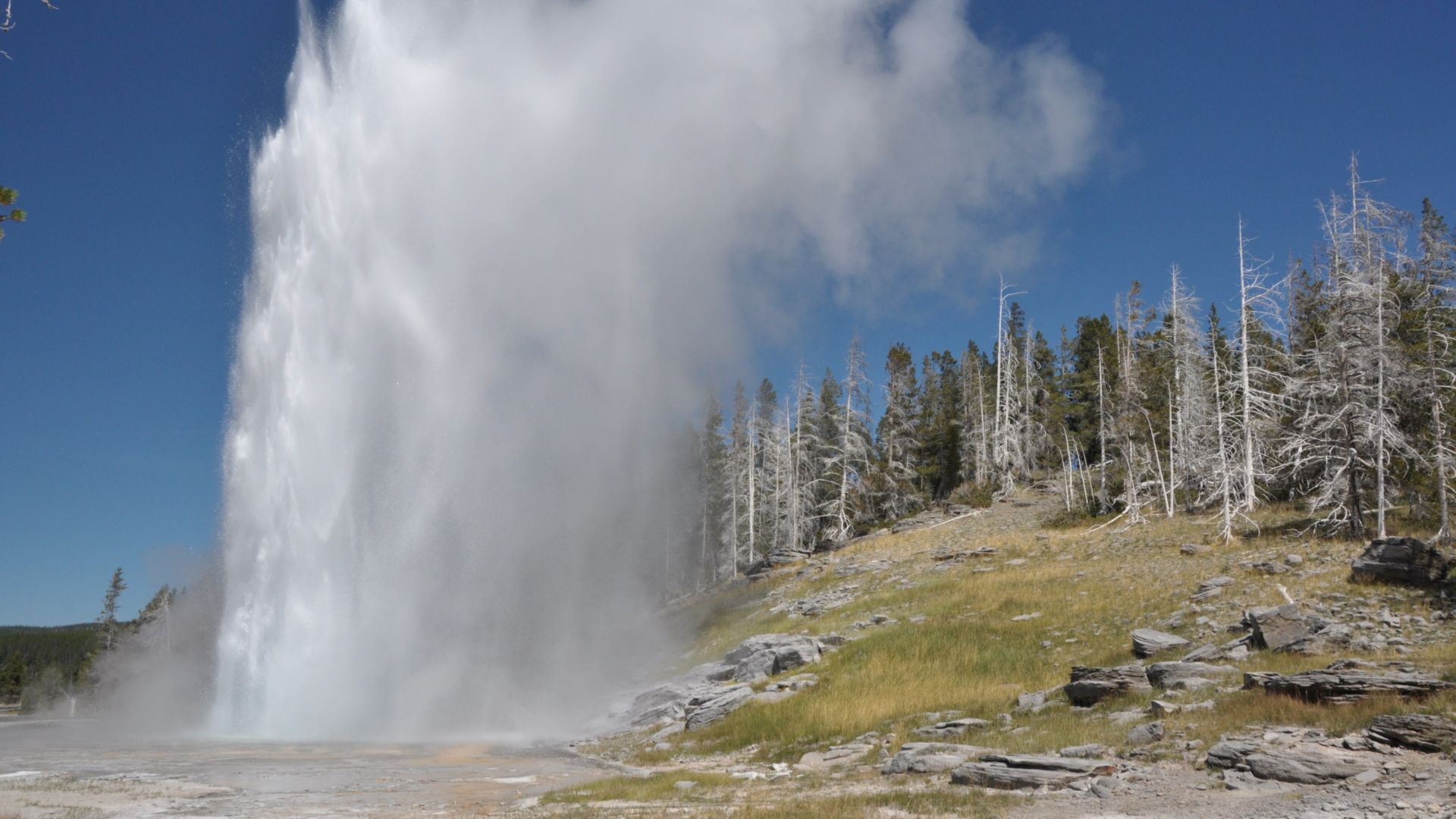
These types of pressurized events can range from small eruptions in hot spots to larger events that cause massive craters.
The hydrothermal explosions can often throw rock and debris large distances and can be hazardous to people and animals in the area.
Recent Eruptions
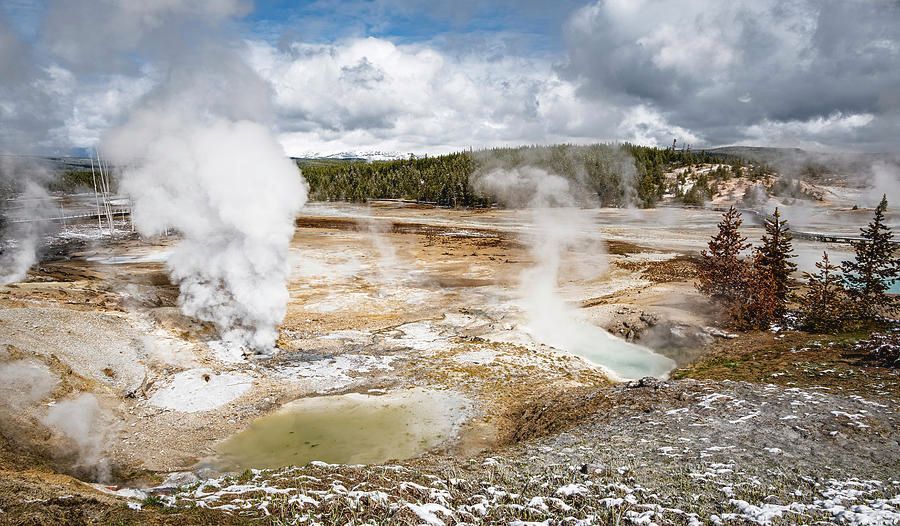
Smaller eruptions are common throughout the park and they usually don’t cause nearly as much damage.
On April 15 of this year, a minor explosion occurred in the Norris Geyser Basin, and another smaller eruption happened in the same Biscuit Basin in 2009.
Many Large Basins Are Caused by Explosions
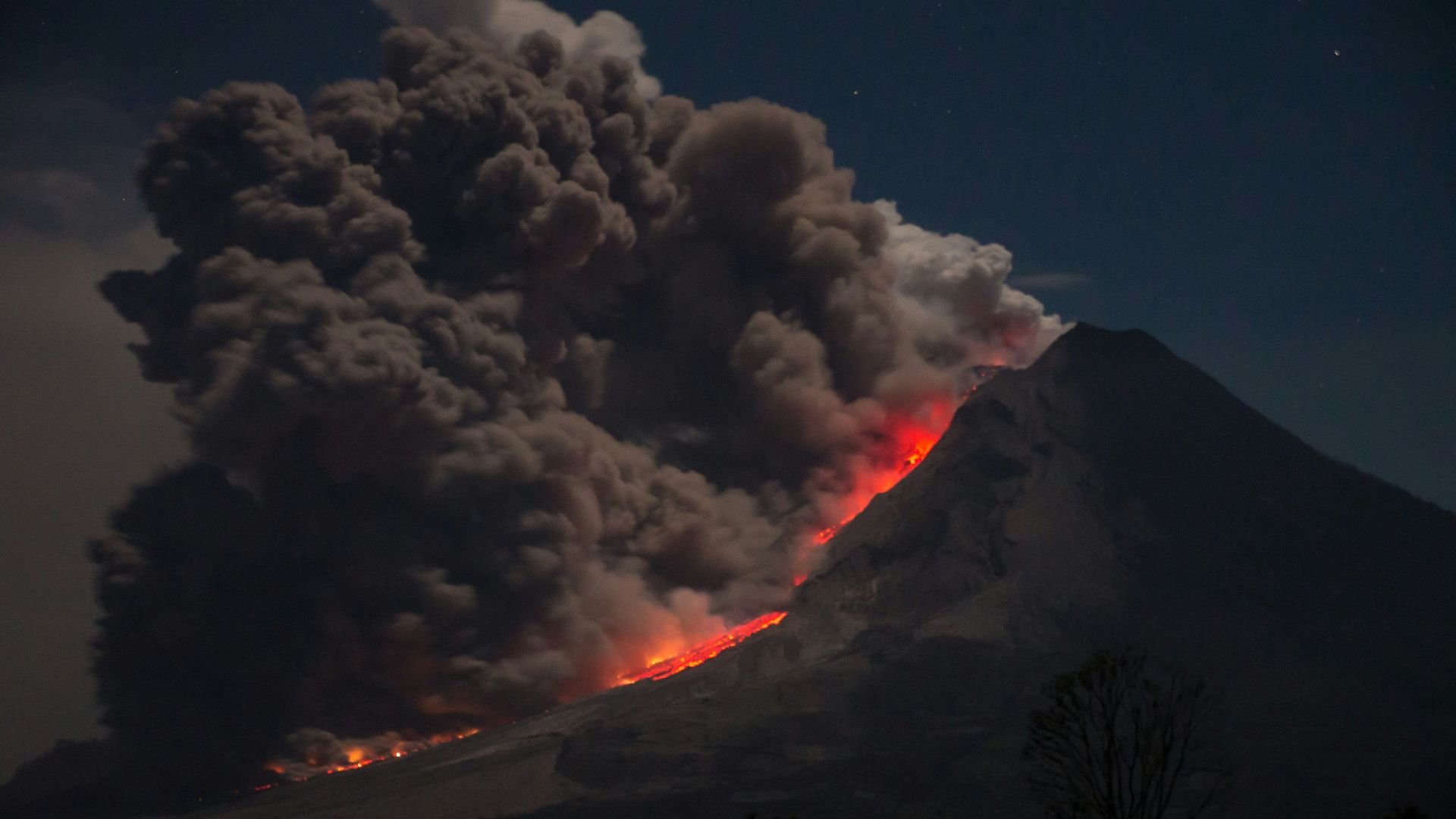
The park has plenty of large hydrothermal explosions in its history that have changed and altered the landscape of Yellowstone.
Mary Bay on the edge of Yellowstone Lake was once the site of the largest hydrothermal explosion. It occurred roughly 13,800 years ago and created a crater roughly 2 miles wide.
The Video
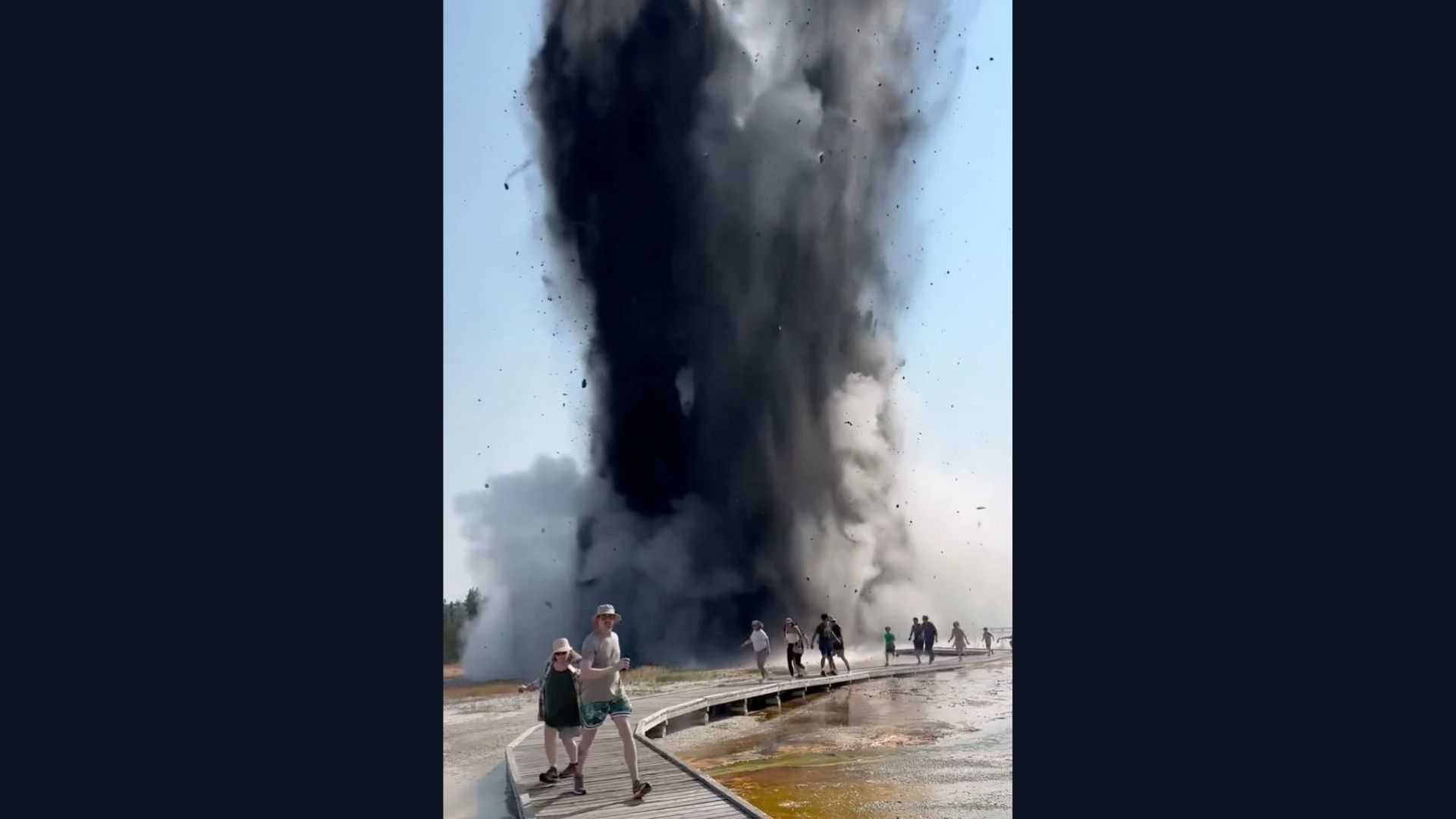
A few of the visitors were lucky enough to already have their cameras rolling at the time of the explosion. The geyser along the wood board walk is one of the most popular destinations in the park, well-known for the colorful pools that create an unique experience.
The videos show a massive stream of black water and debris being shot into the air by the geyser as scared tourists run for safety. The aftermath shows debris scattered around the boardwalk and several wood planks completely crushed.
Different from Volcanic Eruptions

Hydrothermal explosions are distinctly different from volcanic explosions, since they’re primarily fuelled by steam and water, not by the movement of magma towards the surface of the Earth.
“Monitoring data show no changes in the Yellowstone region. Today’s explosion does not reflect activity within volcanic system, which remains at normal background levels of activity. Hydrothermal explosions like that of today are not a sign of impending volcanic eruptions, and they are not caused by magma rising towards the surface,” Poland wrote in the statement.
Area Is Closed to the Public
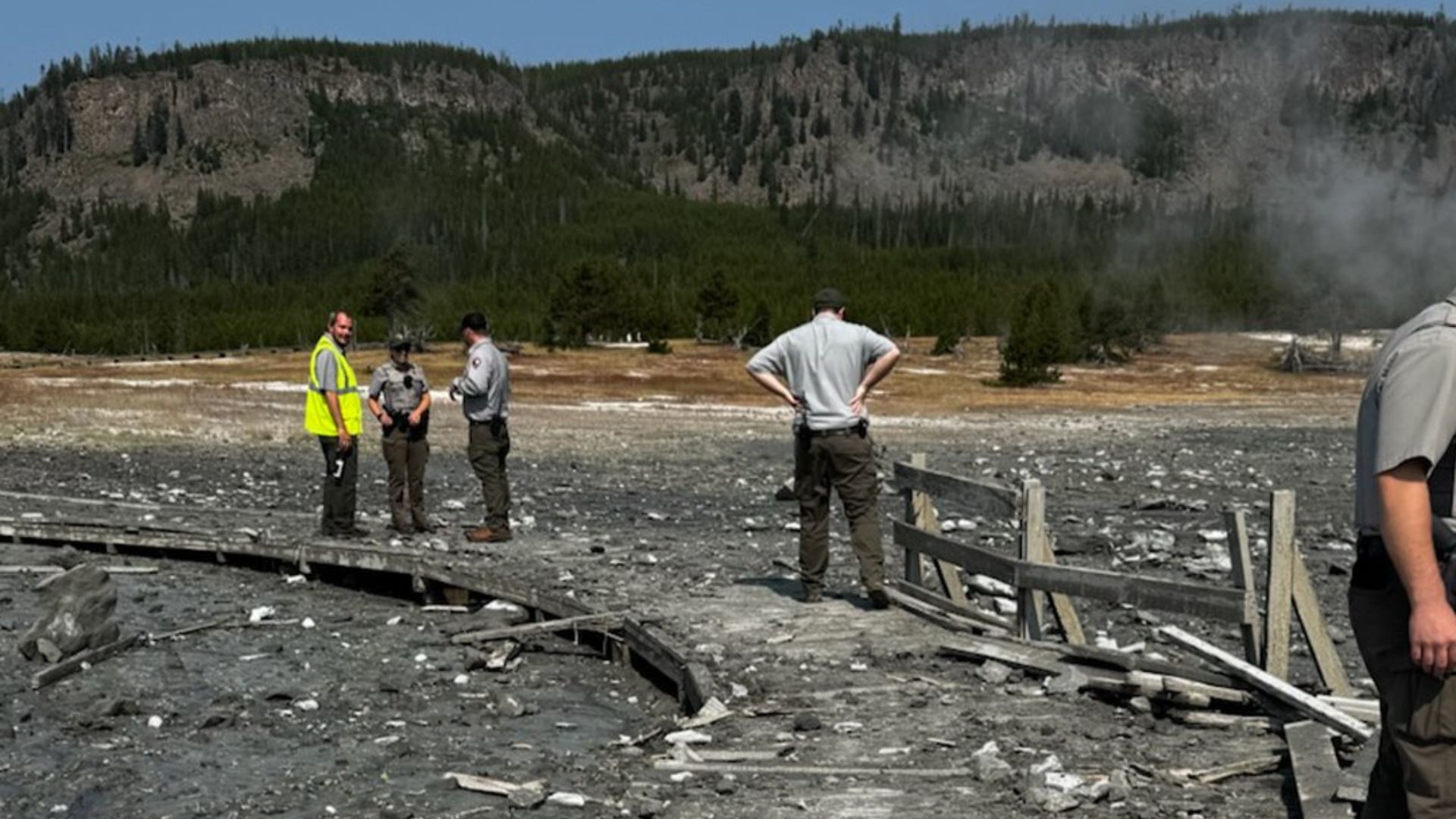
While nobody was injured from the blast, the area has been cordoned off from the public. The boardwalk will need to be repaired before the walking path can be reopened.
“Biscuit Basin, including the parking lot and boardwalks, are temporary closed for visitor safety. The Grand Loop road remains open. Yellowstone National Park geologists are investigating the event,” Poland said.
Geologists Will Survey the Area

For the next few weeks, geologists and park officials will survey the area to ensure that no more activity can be expected once the popular walking path reopens.
No more eruptions are thought to occur as these large events only occur once every few hundred years and are quite rare. The park visitors who witnessed the event first hand are lucky to be able to experience something like this, especially since no one was hurt.
Safety Is Important in National Parks
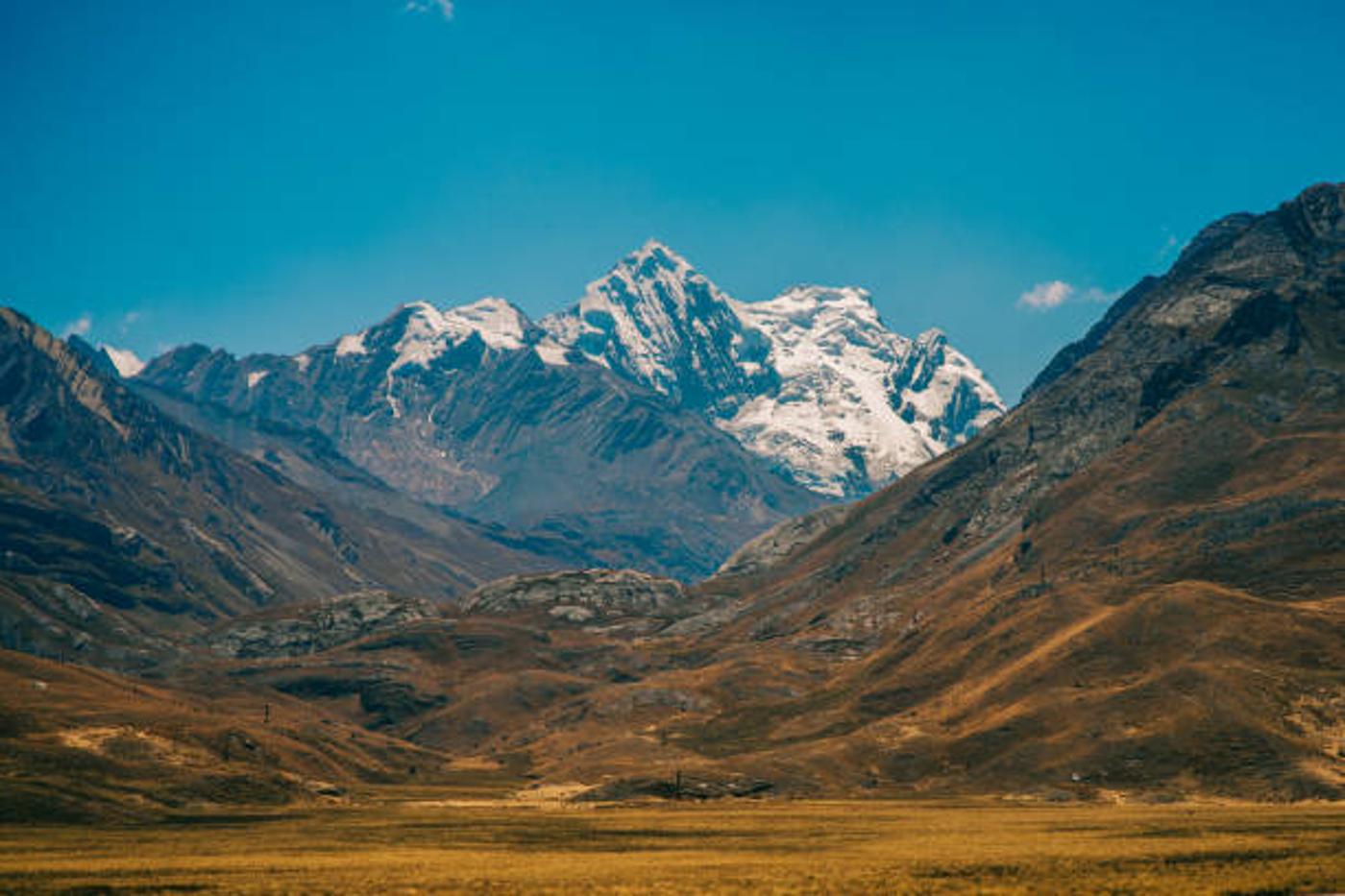
The geyser explosion is a reminder that National Parks might seem well maintained and calm, but anything can happen.
In other areas of Yellowstone, dangerous animals like wolves, bears, and bison are commonly seen and can hurt people very easily. Remember to follow the walking path and steer clear of wild animals when visiting one of the nation’s spectacular parks.








































